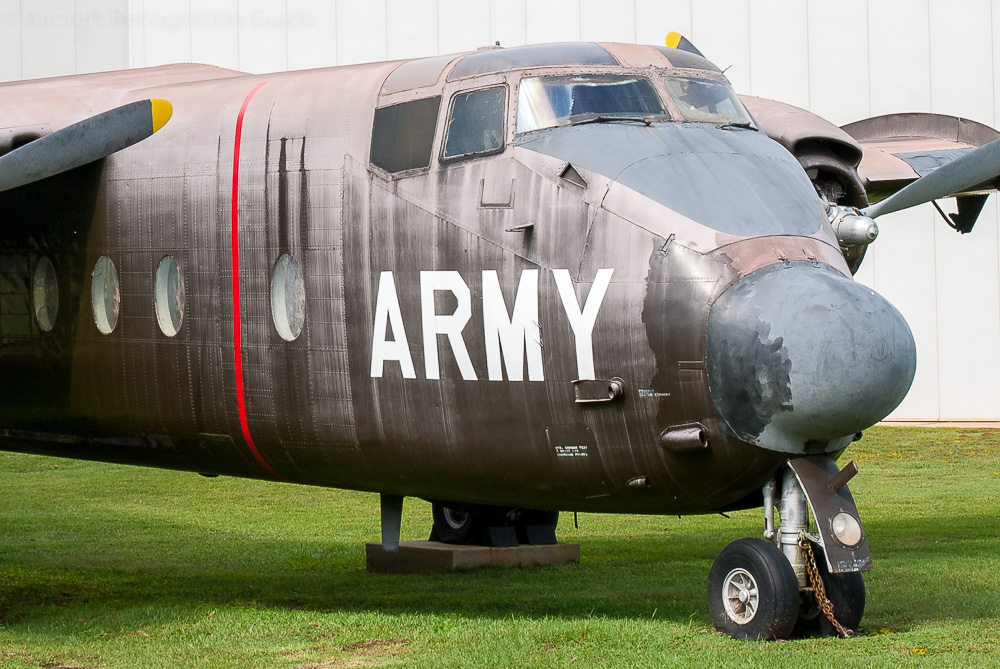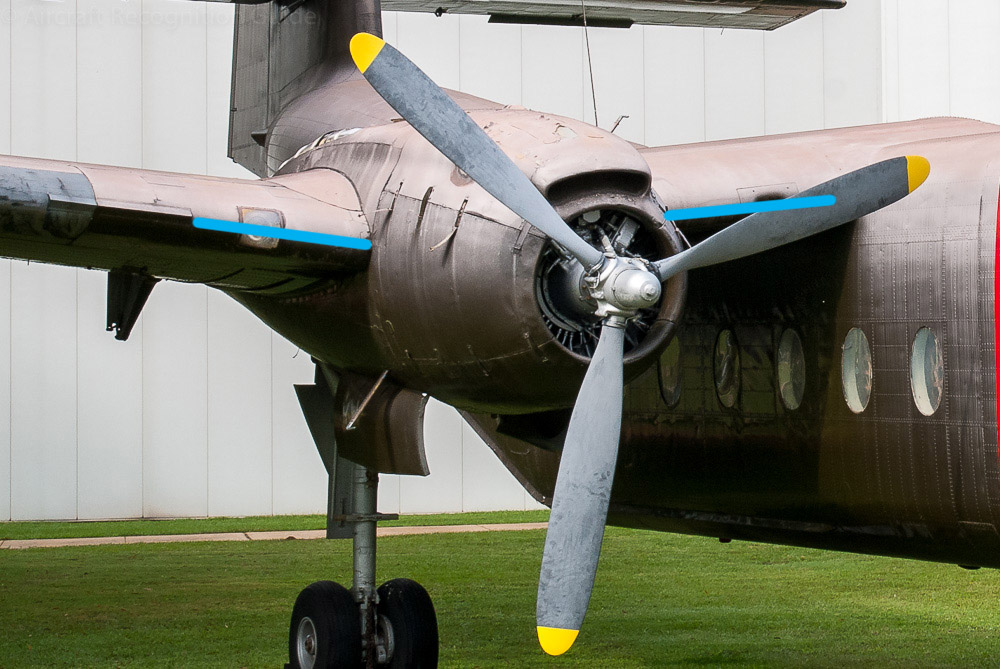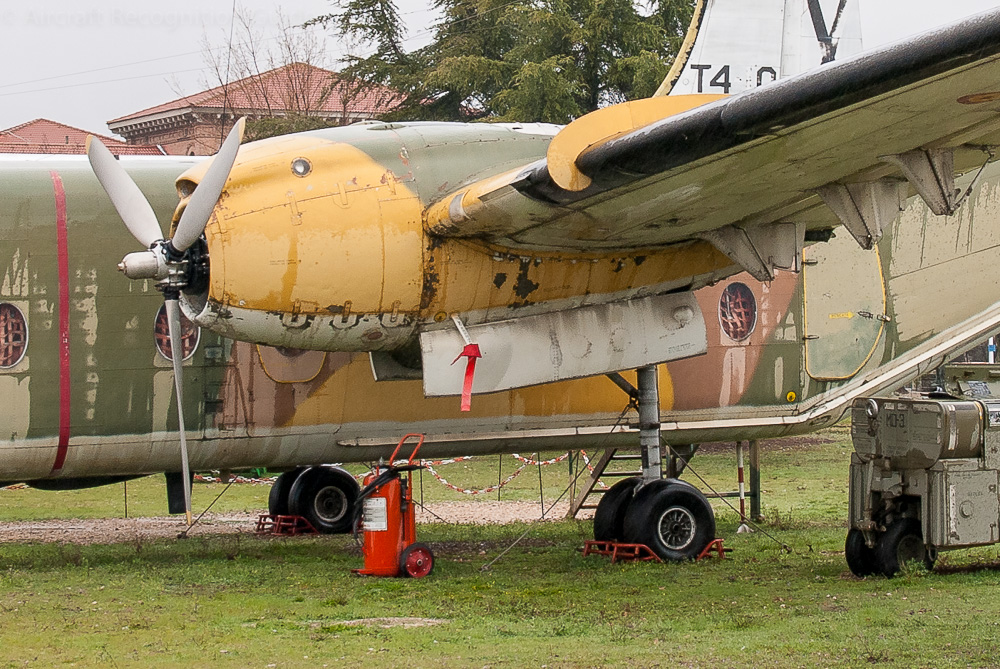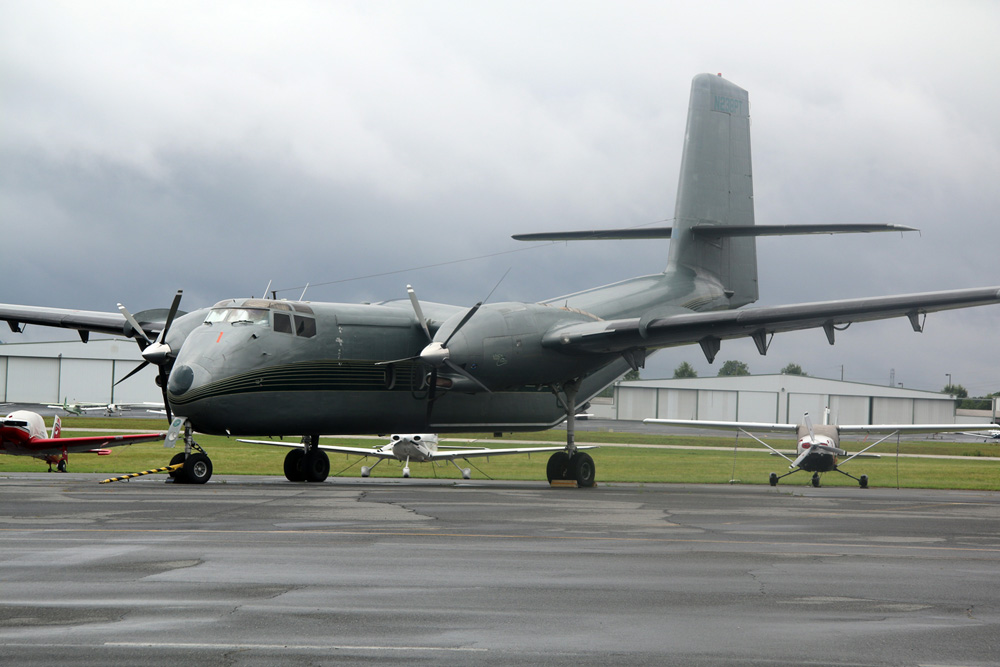
DeHavilland Canada (Viking Air) DHC-4 Caribou
While DeHavilland Canada had already experience with rugged STOL aircraft, the company had none with large aircraft. So whe it responded to a US Army requirement for a tactical STOL transport aircraft, this proved quite a departure from known territory.
The resulting DHC-4 - named Caribou - is a high wing aircraft with engines in the wings' leading edges. The two wheel main landing gear with long legs retracts forward in the nacelles. Typical are the gull wings: the part inside the ncalles have an anhedral, but the outer wings have a dihedral. The fuselage of the DHC-4 has a nearly square cross section, and has oval cabin windows. Cockpit windows are in front and above the pilots. The nose is blunt; the double wheel nose gear is placed at the very beginning of it. It sometimes has a radar bulge. The rear fuselage of the Caribou slopes up, with the vertical stabiliser starting above the top of the main fuselage. The horizontal stabilisers are attached at about a quarter from the base of the vertical fin.
Viking Air purchased the type certificate for the DHC-4 in 2006 (together with all models from DHC-1 until DHC-7). It continues support for the aircraft still in operation.
The cruciform tail of the Caribou is positioned high, even above the level of the top of the main fuselage.
Different versions
The versions of the Caribou mainly only differ internally or by engine type and thus nacelle shape. Therefore most cannot be distinguished on the outside.
DHC-4 (YAC-1, AC-1, CV-2A & C-7A, CC-108)
As the DHC-4 was developed in response to a US Army order, the first version is the one that was delivered to the US Army as (Y)AC-1. Later is was re-designated CV-2A, and C-7A respectively when transferred to the US Air Force. CC-108 was the designation of the DHC-4 in Canadian military service. In other types of service the variants are known as DHC-4.
All have radial piston engines driving three blade propellers.
DHC-4A (CV-2B & C-7B)
This version was the second production run for the US Army. It is externally the same as the CV-2A/C-7A. Internally, it was reinforced with additional ribs, allowing an increased MTOW. The official designation is DHC-4A.
The piston powered DHC-4s have a blunt front and an oil cooler channel on top. Note the three blade props.
DHC-4T Turbo Caribou
Newcal Aviation, a parts producer for DHC aircraft, saw a market for a modernised version of the Caribou, with turboprop engines. As such it modified a DHC-4A with PT6A engines with five blade props. So the nacelles are more pointed than those of the original piston versions. Pen Turbo has taken over the programme, but still only a few aircraft have been converted to DHC-4T Turbo Caribou.
The nacelles of the DHC-4T Turbo Caribou are more streamlined than those of the original Caribou, but have the same basic diameter. (photo: wiltshirespotter/WikiMedia)
Confusion possible with
DeHavilland Canada DHC-5
The DHC-5 Buffalo is clearly derived from the DHC-4 Caribou. Basically, you could regard the DHC-5 as a DHC-4 with a T-tail and turboprop engines, although there are more differences.
Transall C-160
The C-160 is much bigger than the Caribou, but still the tail may put you on the wrong track to proper identification. This has no cruciform shape though and the main gear retracts in pods along the bottom of the fuselage.
Quiet Short-Haul Research Aircraft

Under supervision of NASA a Buffalo was modified as Quiet Short-Haul Research Aircraft (QSRA). It received a new wing with four jet engines on top instead of two turboprops underneath. Still, some elements of the Caribou remain and could cause confusion. (photo NASA/WikiMedia)
Augmented Wing Jet-flap STOL Research Aircraft

Another Buffalo modification was the Augmented Wing Jet-flap STOL Research Aircraft. This has two jet engines under the wings in large nacelles. The wing span was shortened and the wings had leading edge slats. Air from the ducted engines was blown over the wings to increase effectivity. (photo NASA/WikiMedia)







